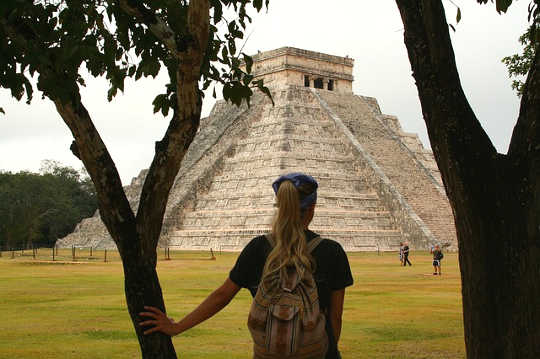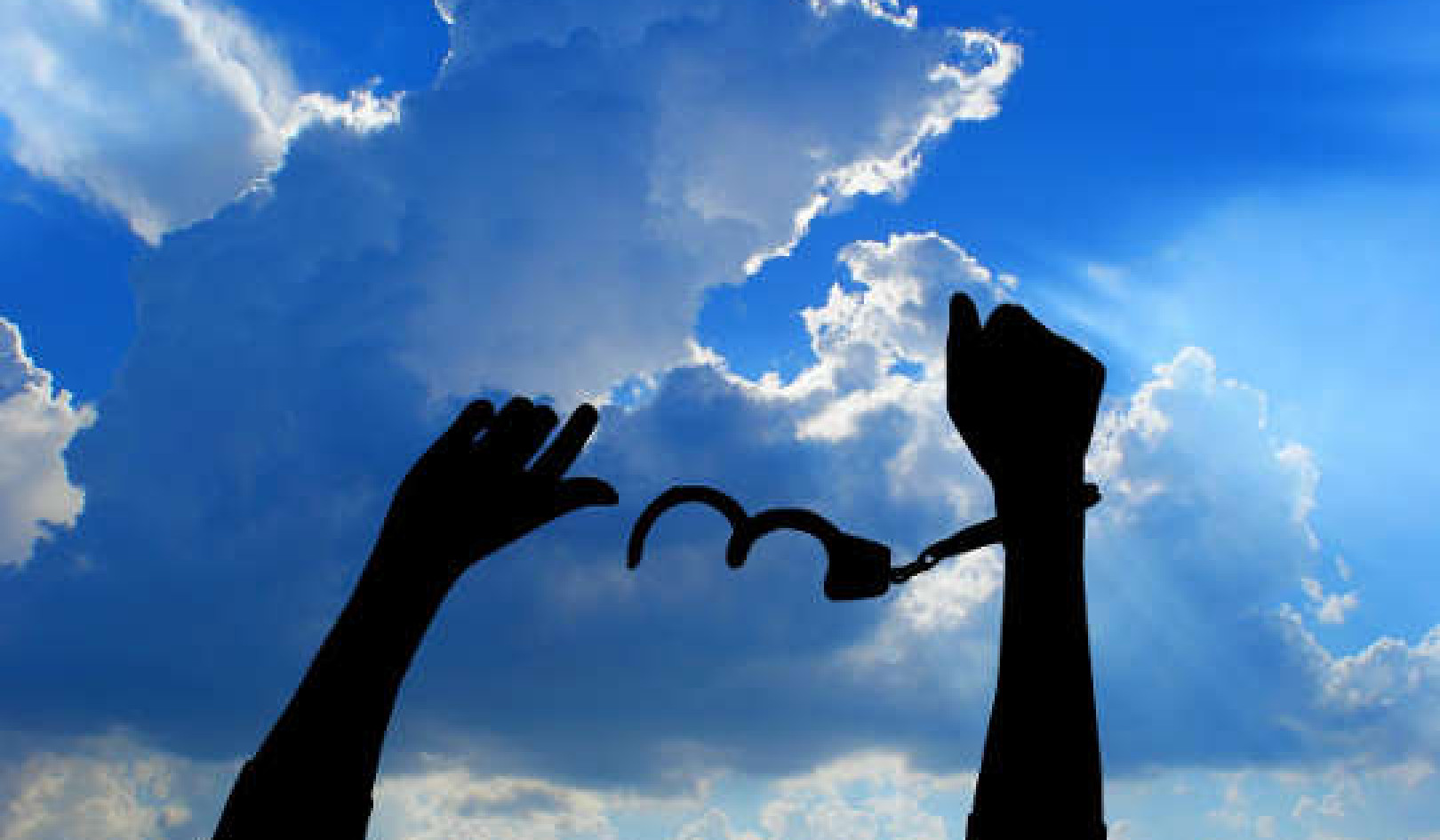
Photo credit: julimo
Many people educated in Westernized societies are currently realizing the limits of Western rationalism. Aiming to reconnect to a holistic life experience, they search for spiritual engagement and its connection to daily life.
I was given the opportunity to experience such a connection while living with the Maya spiritual caste and “ordinary” people who vividly and constantly communicated with their higher-ups in heaven, as our ancestors used to be able to do. In a give-and-take relationship, they cherished God, the saints, and the numinous energies that dwell among them. In doing so, they receive support from these entities in return. Trapped in a world of convenience, many of us today have lost touch with this network of nature and the universe.
The Contemporary Search for Meaning
"Christianity triumphed in the world and became a universal religion only because it detached itself from the climate of the Greco-Oriental mysteries and proclaimed itself a religion of salvation accessible to all."
When religious historian Mircea Eliade wrote the above words in 1958 (Eliade 2012, 17), a new, globalized society was already under way. Questioning the status quo, politically as well as spiritually, and in light of a globalized life, many people began to incorporate other religions and spiritual practices into the one with which they grew up. Who would have thought that so many people would abandon the church of their heritage, and who could have envisioned that a practice such as yoga would become mainstream in the West?
On the verge of economic and political globalization, Western people today once again request spiritual holism—possibly one that, independent of cultural and geographical separation, would one day unite people around the globe. Today, people in industrialized societies lack the idea of a unified world. They live in a dual world, at most. While physically occupying the natural world, one also inhabits a world proposed by science and its prolongation—technology.
Occupying a position of dominance in Western daily life, the concept of the machine tends to overrun humanity. A redefinition of humanity as a hybrid of natural being and machine is already in progress. The microchip, the Sofia robot, and the Watson or Tianhe supercomputers are starting to infiltrate the mass media and with it our homes.
With life divided into specialized sectors, the essential sense of life unity once provided by spirituality and/or religion has been lost for many. A new philosophical or spiritual infrastructure, to hold together the different fabrics and worlds of life today, has not yet been created. But a new search for meaning is under way, and people in the modern world are looking to churches and tribal spirituality for answers.
People travel to the Amazon to learn from the shamans or to India to practice yoga to expand their minds’ capacities. They delve deeper into the knowledge of the people and nature of the Himalayas, and they replace conventional diet and medicine with their organic and holistic equivalents.
Science and “Non-Science”
In the meantime, in our universities, young scientists from different fields studying the Self are still learning to oppose the idea of morality (psychology) versus memory (neuroscience). Examining a phenomenon from an extreme perspective consequently leads to extraneous ideas that are equally extreme. Not surprising is the fact that exploring spirituality scientifically may lead to the judgment that everything nonscientific is suspicious, a notion bundled in the terms mystical and occult. These unsatisfyingly ambiguous terms do not express the natural quality of their content.
To the nonscientist, there is nothing mystical about any form of conversation with God or numinous beings—whether in so-called tribal context or via world religions. Rather than touching the heart, contemporary science often points a finger, and most of the time true mind and common sense fall to scientific rational limitation, which today quite often has a heartless and inhuman demeanor that easily binds with the emotionless machine.
But how should people who are little educated in matters of the heart, and who move ever deeper toward a mechanized reality, even recognize their lack of understanding and awareness? The dividing discourse of contemporary science tends to neglect the question of what unites humans with each other and with their surroundings, because the answer to such a question is not measurable.
That which is sacred tends to unite. So how does the definition of human being, as a unifying entity, fit into today’s scientist’s perception? “Self” and “thought,” two of the foremost ideas explored by psychology, have been defined distinctly by many throughout history. By studying the Greek author Homer, we notice that he did not define a gap between thinking and feeling (Rappe 1995, 75). This opposition to the Western post-Greek worldview (more specifically post-Descartes) needs adjusting.
One cannot find a true orientation in the world when looking at thinking and feeling as two separate concepts disconnected from each other. For when these entities are separated, one becomes easy prey for manipulation. Unfortunately, those who are able to unify the spirituality of thinking and feeling are sometimes seen as a threat and can become the subjects of persecution. For instance, the Chinese government incarcerates practitioners of Falun Gong, a practice that combines qigong with Taoist moral teachings.
Universally, people’s reactions and decisions primarily originate from what Czech phenomenologist Jan Pato?ka called the “natural world,” which is originally and intrinsically a part of reality that is tied to human nature. Not able to withstand the pressure of critical thinking, we stopped trusting our basic instinct.
John Amos Comenius, and here is our connection to the Maya, showed the importance of returning to understanding the essences of phenomena—simply their original and true meaning, which in Western society today often gets lost or diluted. We can easily do so through thinking, and we reach satisfactory results when thinking and feeling are unified and make a trine with the spiritual realm.
Comenius’s method is to start out simple and gradually tie in more complex learning without losing the connection to the essential meaning or, as Pato?ka would call it, the natural world. This process is not a one-way street. It requires stretching the muscle of reflexivity, as thinking and living are reflexive processes. But many Westerners today do not actively stop to consider the world around them or experience it fully.
Having lost control of spirituality over time, Westerners today inhabit a matrix in which they are subject and victim to scientific and marketing paradigms. Gradually, more and more power is taken from them by a power-holding minority.
Spiritual Unity Between Humans and Nature
The value of spiritual unity between humans and nature, the trophy of creation, has splintered, and many Westerners now rank at the level of mere goods. In a fragmented world, people may have impressions, observations, thoughts, and memories, but these singular pieces do not form a unified reality, a dynamic world that is alive and subjective (Pato?ka 1992, 98). Instead of creating their own spirituality, the masses nowadays choose advertised ideas and follow the teachings and movements of an instructor, such as a celebrity preacher or yoga teacher.
According to phenomenologists, understanding things out of our personal perception is an ability based in the natural world. Science, on the contrary, aims to objectivize the world. The natural world, however,cannot contain what is not objectively explainable. Therefore, it cannot function as a counterargument for objectivism.
Rationality removes humans from their original, natural Self so that a large part of their actions and thoughts are alienated from their nature. Since Descartes, we have been told that rationality is the path to the Self, whereas in reality it is only when the Self is rooted in nature that it can make sense of the world. That process of “sense-making” involves all the senses, including those not of the mind and its tools of rationality.
The scientific process that crept into the general understanding of the world,inundated by the pretentious world of advertising and the inescapable role models of the film and TV industry, slices up the unity of the world without creating what Jan Pato?ka (1992, 98) would call a “net of interactions” that causes a discrepancy that Pato?ka sees as a crisis of the soul in humans. A world filled with objectivity does not allow people to feel free to make spontaneous decisions or to choose based on interest, away from outside pressure.
People living in such a system often perceive freedom, but because their Self is often not rooted in its natural foundation, it has been subjected to outside forces. People start seeing themselves as objects rather than human beings (Pato?ka 1992, 5). This perception alienates people from their natural Self even further, causing them to finally give up on themselves and start adhering to and relying on the guidance of outer forces—such as the gym instructor, a TV persona, the chef in a cooking show, or a political leader—and unconsciously disintegrating their natural identity and forming one that is alien to their natural being. This sounds like a dark picture, but to many it is real.
The Sacred Connection: Unity Rather Than Divergence
The traditional Maya strive for unity rather than divergence. Their objective is not to abandon or change what their forefathers planted but to be as true to it as possible and to respect the judgment of their forefathers. Because they believe that those ancestors received direct instructions from the Creator(s), they consider that knowledge to be pure (or close to pure). Maya “repetition of the primary events” is essential for ensuring that their origin will not be lost, and it serves as the basis for complex thought. This concept correlates with Comenius’s “tying together basic thought and complex multitude.” Complexity results from simplicity.
The traditional Maya recognize the need for change to keep things moving, and historic events such as the European Conquest shook up and changed their lives profoundly. Nevertheless, they relate and weigh every change against the primordial event, holding the consciousness alive. In this way, their rituals and customs ultimately serve to keep the world together. Without a balance between fragmentation and unity and without a unifying philosophy, the world could disintegrate in a way that humans could not handle.
Meanwhile, many Westerners have mocked and discarded this sacred connection. Some even demean altogether the idea of a personal or impersonal Creator or energy who gave humans a blueprint.
Since communication between the Creator’s forces and human beings is mostly nonverbal, humans need to be in tune with a variety of forms of communication to understand this blueprint. They must also level their energy and its frequency with that of the numinous being(s) in order to make contact possible.
Traditional societies, such as the Maya, have specialists who cultivate this knowledge of communication. They live and heal by listening to the input of higher forces through the method we call “shamanism.” In a lecture titled “Why Shamanism Works,” given at Yale University in April 2017, Jan van Alphen summarized how the art of convincing influences the brain.
“Most illnesses are mental. This fact has been repeated, the reason however has not. Among the various dimensions of the human body, the head is the seat of the brain. The brain is central to the human body, because it manages all other body parts. The organs function due to decisions in the brain. Their vital energy is determined there. The brain holds the major power over all human endeavors, well-being, and his overall existence. So how is it that we doctor the different parts of the body instead of impinging on the brain? It is that simple.
"To influence the brain, frequencies work. Sound, color, light, fragrances, and ultimately love. A voice can speak affirmative prayers, a drum produces full and round sounds, a bag of seeds creates a sound like ants leaving the body. Pleasant colors and fragrances over time affect the brain and can transform its stuck beliefs. If someone else can convince you of something, your brain is convinced. The art of the shaman is ultimately the art of convincing. Otherwise, one is stuck believing that the physician can do better.”
Shamanism is known to be well advanced in the nonphysical realm of brain function, something Western medicine tends to ignore.
The goal of anthropological work should be to combine the originally common fundamental principles and their expressions in other cultures with the Western way of life in order to reconstruct some of what was lost by historic developments such as the Inquisition and Enlightenment—when rationality raged through Europe and the world.
The compared cultures can learn from, enrich, and perhaps even heal each other. I would argue that if Western culture would put more effort into sowing science into society spiritually instead of speeding off in the name of progress and only making sense of the world on a limited rational basis, humanity would be more whole and live its existence the way it was designed to be lived.
Though Spirit often needs time, which does not fit into the contemporary idea of effectiveness, hopefully modern humanity will take this direction.
©2019 by Gabriela Jurosz-Landa. All Rights Reserved.
All Rights Reserved. Reprinted with permission of the publisher.
Bear and Company, an imprint of: www.InnerTraditions.com
Article Source
Transcendent Wisdom of the Maya: The Ceremonies and Symbolism of a Living Tradition
by Gabriela Jurosz-Landa Illustrating how contemporary Maya life is suffused with spiritual tradition and celebration, the author shares the teachings of the Maya from her initiate and anthropologist point of view in order to help us all learn from the ancient wisdom of their beliefs and worldview. Because, to truly understand the Maya, one must think like the Maya. (Also available as a Kindle edition.)
Illustrating how contemporary Maya life is suffused with spiritual tradition and celebration, the author shares the teachings of the Maya from her initiate and anthropologist point of view in order to help us all learn from the ancient wisdom of their beliefs and worldview. Because, to truly understand the Maya, one must think like the Maya. (Also available as a Kindle edition.)
About the Author
 Gabriela Jurosz-Landa is an anthropologist and Maya shaman-priestess initiated by her teacher Tomasa Pol Suy in Guatemala. She has researched Guatemala for more than 20 years, living there for 6 years, during which she participated in ceremonies with Maya spiritual and political authorities, including the 2012 New Era celebrations. The founder of the Forum of World Cultures, she writes and lectures internationally. Visit her website at https://gabriela-jurosz-landa.jimdo.com/
Gabriela Jurosz-Landa is an anthropologist and Maya shaman-priestess initiated by her teacher Tomasa Pol Suy in Guatemala. She has researched Guatemala for more than 20 years, living there for 6 years, during which she participated in ceremonies with Maya spiritual and political authorities, including the 2012 New Era celebrations. The founder of the Forum of World Cultures, she writes and lectures internationally. Visit her website at https://gabriela-jurosz-landa.jimdo.com/
Video -- Book Introduction: TRANSCENDENT WISDOM OF THE MAYA
{vembed Y=jqELFejHV04}
Related Books
at InnerSelf Market and Amazon


























